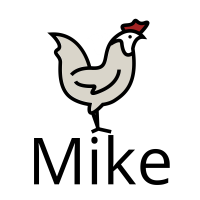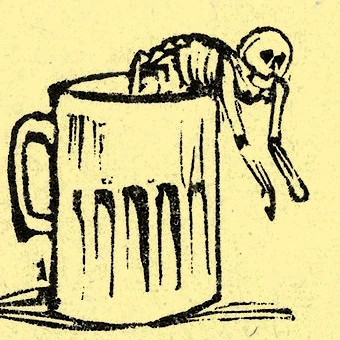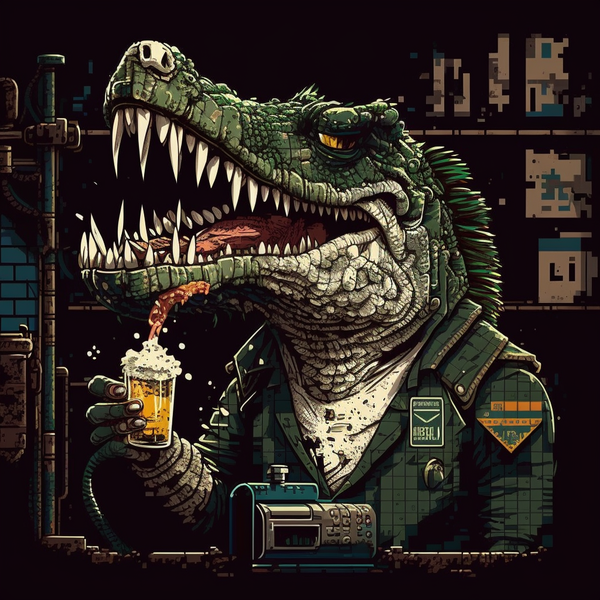I wanna try an experiment but I’d also like others experience here.
I’ve noticed certain cats eat tok fast and also go back to extra food. I feel like if the overeaters/gulpers were let to eat last and then all food leftovers were removed afterwards we might have less instances of vomiting afterwards.
What say you, cat-owning Lemmings?
I’ve always just left bowls of food out for my animals. Gets topped up every 4ish days. Fresh water every morning though.
Everyone’s mileage will vary though, some dogs and cats just can’t be left with food. They’ll eat till the vomit. I don’t think there’s any way to fix it, just roll with it.
Depends a lot on the environment when they were young, I wager. Could also just be nature more than nurture and some animals are just more food motivated than others from birth
That sounds overindulgent to the point its literally the opposite of my problem. I feel the one cat is eating too much + too fast to the extent its causing them to vomit it up making it all fruitless anyway
Uuhh, I do the same as Schmidt and leave the food out. It works fine NOW, but let me tell you about when it failed. I’ve had different cats for decades and never had a problem until my current cat, who was listed at the shelter as ‘shy’. They told me she’d escaped people multiple times and they’d only managed to get her out of the walls the previous day (after she’d been hiding in them for over a week). She was adult, but small and thin and harboring a deep hatred for being confined (she isn’t ‘shy’, she’s extremely willful). We brought her home and she immediately found a hiding spot behind the oven, near the food and water that was out for the finicky older cat. For the first week, the only way we knew the new cat was still in the house was because we’d wake up, find the cat bowl empty and a big pile of cat vomit on the floor. We’d clean up the vomit, fill the bowl, and generally leave the kitchen alone as much as possible. After that initial week, the cat figured out that there would always be food. She would not starve. She did not need to gorge, and gorging was not comfy. Eventually she came out and accepted her new ‘family’. She continued to over-eat a bit too much for several months, but she settled on a chunky weight and has stayed at it for several years now.
Now I have a theory: I suspect that cats who experience food insecurity are far more likely to gorge themselves, and may never stop as long as they suspect their food supply is limited. If you want to test that theory with your own cats, I would be interested in hearing the results.
If there’s one thing I’ve learned having and caring for many cats over the last 30 years, they’ve all got their quirks. Some were over eaters that would throw up almost daily. Some would be grazers and do just fine with their bowls full all day and night. No answer is going to be just right for every cat.
If you have cats that eat at different paces, you might just have to feed them on a schedule in separate locations. That was the only way we could handle it when we had the same situation.
And it’s important to take the time! They deserve it and will be a huge improvement to their life. Don’t let them chonk, they are really sad when they dechonk.
You should consider wet food instead, it’s much better for cats.
For the gulpers you can get bowls that are complicated to slow them down.
Note those complicated bowls may result in your cat being noticeably more disagreeable than before, from experience. My guy hates that damned bowl with such a passion it’s funny to watch him try and figure out how to destroy it so he doesn’t have to deal with it anymore.
I’m struggling to imagine what a complicated bowl looks like. Do you have a link to one I can take a geez at?
We’ve tried a few over the years. This is one of the ones we’ve used.
Probably something like this
Ok I’m with the cat on this. That bowl would piss me off.
they’re commonly known as busy bowls.
we had to get one for a young dog we took in. he was used to food being scarce, and would gulp down any given to him. the busy bowls make them work for it, so it slows them down a bit.
This sounds so crazy imma need u to elaborate
He is a used cat, no idea how he grew up so not sure what caused it, but he is quite aggressive with food. He eats so quickly when using a normal bowl that he sometimes will even throw it right back up.
There is a clear difference in his demeanor when he gets fed with a bowl that forces him to eat slower. Not quite angry, but he clearly hates it and his demeanor shows it. He is not a happy kitty when he eats from those bowls.
We used to exclusively use dry food until one of our cats had crystals form in their urethra which lead to a blockage and a very expensive emergency surgery. We tried the expensive prescription dry food for a while (it just makes them drink more water so their urine isn’t so concentrated) but wound up ditching it for an exclusive wet food diet. Since then, they’ve had zero issues.
This is weird, I’ve heard the opposite that dry food is better. Lord help me I’m goin on a Google fest.
nah, wet food is better. If cats don’t get enough water they can get crystals in their urinary system. Very painful and can create blockages at are fatal. If your cat is ever straining in the litterbox and not producing it’s an instant emergency vet.
We even put extra water in our cat’s food
Cats don’t really drink enough water and are frequently bordering on a state of dehydration. Pretty much everywhere will recommend wet over dry.
We just add a bit of water to the dry food.
I believe the logic is that dry food is better for their dental health, because the firm texture is better at scraping away plaque, although there’s definitely disagreement on that, and there are other ways to address dental health.
The argument for wet food is that it does a much better job at keeping them hydrated, which is important for a number of bodily functions, including urinary health. Studies say that while cats fed primarily dry food likely drink more water, their total fluid intake is still lower and they’re often still chronically dehydrated (which is also not good for dental health). Moistening kibble can help, but it’s still not as effective as wet food for ensuring your cats are well hydrated.My oldest strongly prefers kibble, but after his urine test at his 1 year check up indicated early signs of urinary troubles, the vet said to either switch him to 100% wet or to a prescription kibble. It took some trial and error, but he’s on 100% wet now, and only gets crunchies as treats. His urine tests have been great, and the vet also said his teeth look good.
We feed our 2 twice a day. First is dry and the second is wet. Before wet food our cats had really bad shedding and one of them developed a clump on his back that wouldn’t go away. After adding wet in daily it’s gone, their shedding is way down, and their coats are silky smooth. Plus one has lost weight and is more fit.
I just give mine their food in batches. Usually a half cup in the morning and a half cup in the evenings (I have two cats).
If I leave out the same amount of food, such as if I’m leaving the house for a weekend trip, I will come back to hungry kitties.
I have a cat that has been an overeater since birth. His siblings would nurse until they were full and then back off to take a little cat nap, but he would nurse until mom left the box the kittens were in and he couldn’t get to her anymore. I feed each of my cats on a schedule and each has a separate place to eat so they can’t steal from each other. Left over food from the other cats gets picked up before the overeater is let out. There are a lot of complicated slow feeders on the market, but a cheap and simple one has worked great for me. It is a narrow, deep bowl with a wide lip that he can only pull a few pieces of food out of at a time with his paw. Wet food hasn’t been as much of a problem with vomiting, so I haven’t tried any slow feeders meant for wet food. Mine eat wet food in the morning and dry food in the evening.
I am linking the feeder I own, I haven’t seen one by any other brands but the design is so simple that they might exist if this one isn’t available near you or you may even be able to craft a DIY version. https://catit.us/products/catit-multi-feeder
I’ve got two cats, Mochi who takes his time and eats by small amounts through the day, and Soba who eats quickly and will always hunt for more food once her ration is over.
After multiple iterations with help from veterinarians, I’ve now landed on this:
- I feed my cats twice a day: in the morning and in the evening. I try not to do it right after I wake up or come home from work, so they won’t learn to wake me up in the morning or nag me as soon as I arrive.
- Mochi has a Pet Safe Smartfeed, it’s a bowl with a flap that opens only with his identification tag, so only him can eat his food.
- Soba has a slow feeder mat for wet food and a food maze for dry food. Helps her eat slower, though she won’t stop eating until it’s over. I also have a Pipolino for dry food, makes her eat even slower.
- I feed Soba “Diet” food. It’s less caloric, which allows me to give her bigger quantities of food so that she feels like she ate more while keeping the calories intake in check.
The Smartfeed bowl is a bit expensive but there is a constant flow of second-hand units on the market where I live, so you could get one on the cheap that way. I was reluctant at first because of the price but it’s been a real game changer, I previously had to put Mochi’s bowl up on the kitchen counter, which only worked because Soba cannot jump high enough.
Edit: forgot to mention that wet food takes up more space in the stomach that dry food. In the case of diet food, wet food is less caloric than dry food, so you can give your cat more wet food (and less dry food) to trick their stomachs.
To add to your coments about calorie content of foods, in the realm of wet foods, pates tend to have the most calories per ounce, while “extra gravy” foods often have the fewest calories per ounce, since the “gravy” is mostly water.
I’m sure there’s some exceptions to this, but I’ve spent a lot of time creating a spreadsheet comparing foods on a variety of aspects in an effort to find the most affordable foods that work for both of my cats’ needs & preferences. If in doubt, the cans should list both kcal/ can and kcal by weight.Yes, in my case it’s wet food with extra gravy
We have a grazer (who is also picky) and an over eater at home. To control their food we had to give them more, smaller meals each day. Here is our feeding schedule:
Breakfast: split a can of wet cat food between both cans (3.2oz can) - between 6-7am Lunch: a scoop of dry food into a bowl each (don’t really know the size, maybe a half cup) - around 12pm Dinner: split another can of wet food - between 5-6pm 2nd dinner: a scoop of dry food each - between 10-11pm
It’s not perfect as sometimes the over eater will get a bit more food, but the restrictions do help keep a schedule for them. When the grazing cat finishes only half their wet food, we often give the rest to the big guy. The dry food is also an appetite control diet, but the over eater still goes to town on it.
The picky one sometimes doesn’t eat the wet food and wants dry food, so we save the half of the wet food for the other one’s lunch.
Experiment around, see what works and what doesn’t. Maybe try an appetite control food, it is a bit pricier but may work for you.
How many cats do you have?
Ive got two. One eats a ton, really quickly, the other likes to take her time and enjoy her meal. But the other cat will jump in and try to eat her share.
I measure out their servings, so Ill usually half their meals and feed them the rest an hour later. Keeps them from overeating.
Get an automatic feeder.
We have an overeater, and a self-limiter. When the overeater developed markers of being pre-diabetic, we finally hardened our hearts and put him on a strict diet. For us, this was extremely hard, as he begged 24/7. He would yowl at all hours of the day, and it woke us up at night. After a month of this with no sign of him changing his behavior, I bought an automatic feeder from Amazon for ~$30.
The main change was that our’s quickly stopped seeing us as the main source of food, and this eliminated most of - and all of - the nighttime begging. It took a week or so, but it was pretty fast.
Second, most have multiple feeding times. This helps in two ways: first, it allows more, smaller portions, which eliminates the binge/purge issue. Second, it allowed us to have feeding times throughout the night, which helped with stopping the nighttime begging.
Third, it’s really easy to calculate caloric input from just the information on the food bag; the portion sizes can be set in the feeder, and it’s an easy, reliable control.
As a minor benefit, it makes feeding easier.
This obviously only works if you feed kibble.
One issue we did have was that we initially gave the self-limiter free-choice kibble on the counter, and it was enough to keep him away from the feeder. This worked because our diet boy was too fat to jump up onto the counters. However, the feeder was so successful that one day he discovered that he had slimmed down enough to get onto the counter, and we had to change tactics. After much tribulation, we simply ended up getting a second auto-feeder and set them to the same schedule. It isn’t perfect, but the dieter is still slowly losing weight, and the self-limiter is maintaining, so it seems to be working for now.
For my neutered cats. Definitely
They get wet food 3x day and eat like pigs. I need to use those bows for greery cats to get them to eat slower. Otherwise they vomit.
When they were young adults they used to have dry food bowl always available, but they quickly became too fat and they were constantly demanding that somebody open the kitchen tap for them.
Then I gave them limited amount of dry food at mornings and evenings and wet food when I came from work.
At middle age they started having urinary problems and bladder stones. After one of them needed a quite expensive “bladder rinsing”, I gave up dry food completely. One cat remains on special urinary diet. Non of them need the kichen tap anymore.
My vet recommended feeding my cats once a day when they turned 1yo. It was a very noisy transition from being free fed as kittens to only eating once a day.
We all found our happy place by feeding them dry food in the mornings and pudding treats in the evening (its mostly water! < is what I tell to my vet). My vet is happy that my cats are at a healthy weight, my family is happy that we no longer hear the song of our cats’ people at 3am, my cats are happy that they get to eat treats.
Also they don’t vomit anymore and don’t leave any leftovers since they know that it’s the next day before they can eat big again. We were able to maintain their weight at 3.8kg for 6mos now since we started this diet.
Have the vomiting cat(s) been checked out by a vet? Vomiting can be normal, but it can also be a sign of various health issues.
Feeding the gulpers last will only increase their food anxiety.
When I had cats I fed them together, and they all had to sit in a straight line (side by side) and wait while I prepared their food.
They got good at keeping each other … uh in line, and they all either succeeded or failed the task together (I mean if they failed we just kept trying until they got it).
They didn’t seem to have much anxiety in terms of eating fast, and didn’t throw up often either.
My suspicion is the co-op nature of the task they had to perform helped them feel at ease with one another.
Who knows though. I trained them to sit there and wait because they’re were driving my girlfriend crazy with their meowing during food prep.
How many cats do you have? Are they overweight? Can you provide more details about your specific situation?
If you have cats vomiting due to eating too much too fast, maybe try slow feeders? There’s also microchip feeders available so that your slower eaters can come back on their own schedule, and it’s more difficult (but not impossible) for other cats to steal their food. And finally, there’s automatic feeders that will dispense food on a schedule. Unfortunately, I haven’t seen anything that combines even two of these into a single product.
In my case, I have 2 resident cats, and frequently foster. My Tabby is a slender grazer, and although he prefers kibble, the vet said he needs to either eat wet food or prescription kibble (urinary). My Void LOVES food and will devour almost anything, and would gladly be a total potato if he could.
I use a microchip feeder for Tabby, and feed him twice per day, leaving the food out for about 2 hours at a time, which seems to be enough time for him to eat enough to maintain his weight. Void currently eats from a basic/standard bowl. He also eats twice per day, and usually finishes his food in less than 5 minutes, but has only vomited when there was an urgent medical condition, so I haven’t actually tried a slow feeder for him yet.Take away the cats and get a dog
















